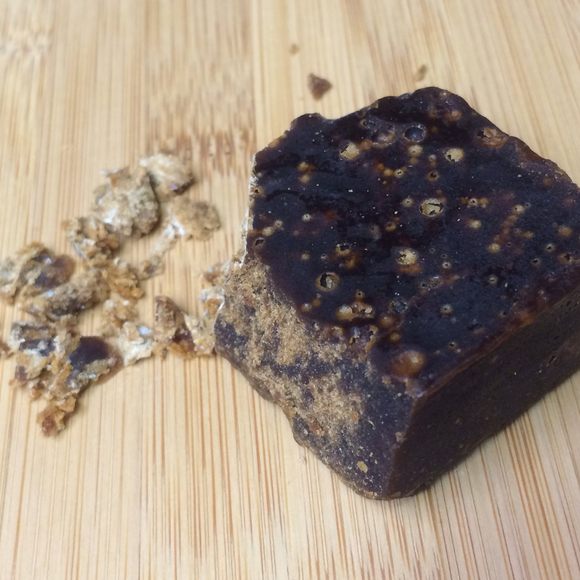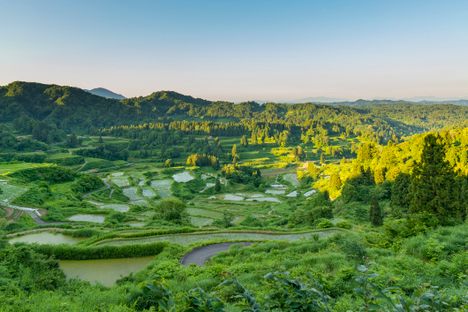Most cafes and bakeries don’t advertise the kind of sugar they add to their treats. Most customers would like to forget that their treats contain sugar, period. But in Eastern Asia, Okinawa black sugar gets top billing when it’s added to drinks and desserts. Its malty, salty, caramel flavor even makes it possible to eat it plain.
Black sugar also enhances milk tea, sweet soups, and desserts like mochi and cakes. When crushed finely, it has a powdery texture instead of a grainy one, and is often used to dust sweets.
Okinawa black sugar has been made since the 17th century in Okinawa prefecture, a chain of islands to the south of Japan. Makers will boil sugarcane juice for hours until it becomes black syrup, then allow the syrup to sit until it hardens into dry sugar. The whole blocks of sugar are a deep brown-black color, though when broken into smaller pieces they appear much lighter. Black sugar is relatively unrefined compared to typical brown sugar, which is often white sugar mixed with molasses syrup.
The idea of sugar as a health food might raise eyebrows, but unrefined black sugar contains minerals like potassium and iron that are filtered out of white sugar. In China, Taiwan, and Japan, a chunk of black sugar in ginger tea is a home remedy for fatigue, nausea, and colds. It’s also recommended for women with heavy periods as a sweet iron supplement. In this case, there’s no need for extra sugar to help the medicine go down.
Where to Try It
-
株式会社 沖縄黒糖 (Okinawa Kokuto Co., Ltd.)
2822-3 Zakimi, Yomitan-son, Nakagusuku-gun, 904-0301, JapanAt this factory, visitors can watch the sugarmaking in action.
Written By
 Anne Ewbank
Anne Ewbank
Sources
- books.google.com/books?id=nvlhBQAAQBAJ&pg=PA35&dq=%22black+sugar%22+okinawa&hl=en&sa=X&ved=0ahUKEwjbsa_ZiLzXAhUExoMKHaW0AZYQ6AEILTAB#v=onepage&q=%22black%20sugar%22%20okinawa&f=false
- www.lonelyplanet.com/japan/okinawa-and-the-southwest-islands/okinawa-honto/travel-tips-and-articles/the-tastes-of-okinawa-food-and-drink-in-japans-southwest-islands/40625c8c-8a11-5710-a052-1479d27671d5
- gardencollage.com/nourish/farm-to-table/brown-sugar/
- chinesemedicinetraveller.com/?article=testaddarticle_2















